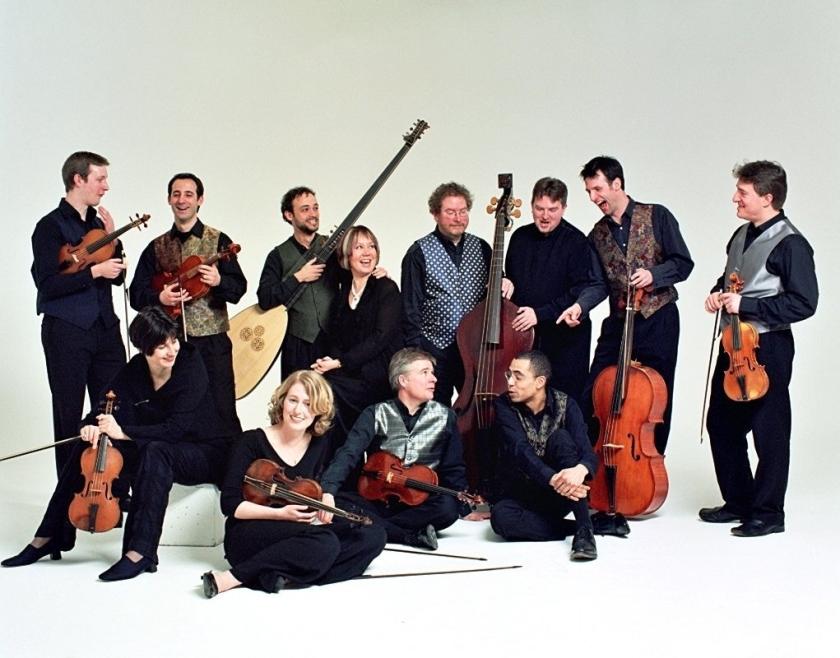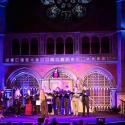According to the wit of either Dallapiccola or Stravinsky (history is divided), Vivaldi was responsible for writing not 600 concertos, but the same concerto 600 times. It’s a joke that has lingered stubbornly in the popular imagination. Had the concerto in question been one of the Four Seasons or indeed one from L’Estro Armonico I don’t think anyone would be objecting; it’s the workaday Vivaldi, those throwaway concertos composed with his eyes on his purse and his mind on his dinner that have so diluted his reputation. Doing their best to set the record straight, erstwhile Vivaldi champions La Serenissima last night presented a programme comprised solely of concertos.
Staring down the barrel of eight concertos (even if some barely top five minutes) is enough to daunt even the staunchest of Baroque enthusiasts. However persuasively La Serenissima’s director Adrian Chandler may argue for the textural and stylistic variations within Vivaldi’s works, they too often lose in the hearing those details so striking to the lingering scholarly eye. Last night’s selection – grouped under the title “The French Connection” – charted the composer’s flirtation with the fashionable French style of composition, an influence, it transpired, more ornamental than particularly substantive.
Although solo honours were shared amongst a fine selection of musicians – flautist Katy Bircher, bassoonist Peter Whelan and oboeist Gail Hennessy, as well as Chandler himself – it was not enough to dispel the feeling that this was Baroque bread-and-butter music, enlivened by just a few jammy movements. Most interesting was the concerto Il Gran Mogol for flute, strings and continuo in D minor – a discovery of Chandler’s that has received its world premiere (and last night its London premiere) with this ensemble. Bircher (pictured below) shaped some elegant lines, articulating the virtuoso passages with soft persuasiveness rather than all-out fire – delicacy that occasionally suffered at the rather more emphatic hands of the ripieno strings. A similar dynamic was at work in the Concerto for Flute, Strings and Continuo in A minor, where balance was at its best in the fragile texture of the Larghetto.
 While Hennessy had to contend with a bizarre rarity of a concerto with solo parts for oboe and violin composed entirely in unison (a predictable enough recipe, it proved, for issues of ensemble and tuning, as well as a rather soggy aural texture), Whelan fared rather better with the C-major concerto RV 473. Balancing a cheerfully avuncular Allegro with some singing legato for the slow movement, it was in the closing Minuet that real swagger emerged, matching for neatly articulated humour the bassoon interjections in group concerto La Notte with which Vivaldi so wittily cuts short the flute’s languorous melody.
While Hennessy had to contend with a bizarre rarity of a concerto with solo parts for oboe and violin composed entirely in unison (a predictable enough recipe, it proved, for issues of ensemble and tuning, as well as a rather soggy aural texture), Whelan fared rather better with the C-major concerto RV 473. Balancing a cheerfully avuncular Allegro with some singing legato for the slow movement, it was in the closing Minuet that real swagger emerged, matching for neatly articulated humour the bassoon interjections in group concerto La Notte with which Vivaldi so wittily cuts short the flute’s languorous melody.
While their substantial recording catalogue proclaims La Serenissima the possessors of both focused tone and precision, I struggled last night to find much by way of identity in the playing. Soft-grained and slightly limp, it was the sort of generic period sound that has fallen out of fashion, dulled in its appeal by the brighter colours and guttural attack championed by European ensembles. Communication between musicians was less than obvious, the visual echo of the tuning disparities that marred so many moments. With recent memories of Europa Galante, Les Musiciens du Louvre and The Academy of Ancient Music still lingering, excitement refused to flicker and concentration threatened a walkout.
- Find La Serenissima on Amazon
- See what's on at Cadogan Hall













Add comment